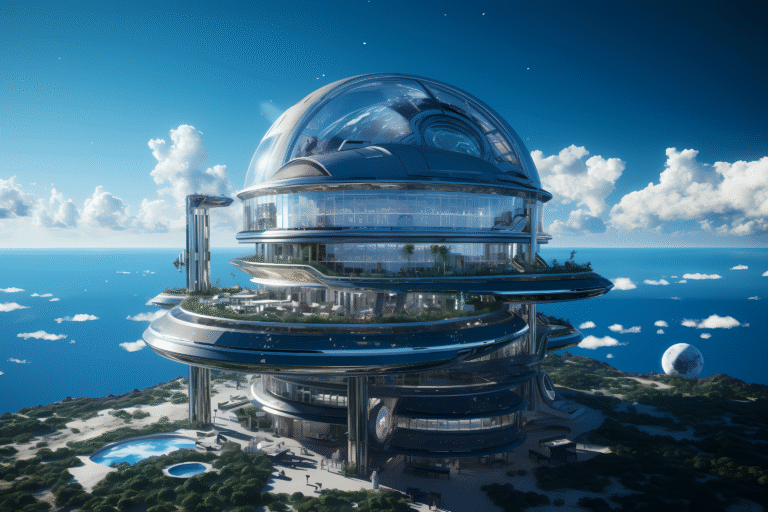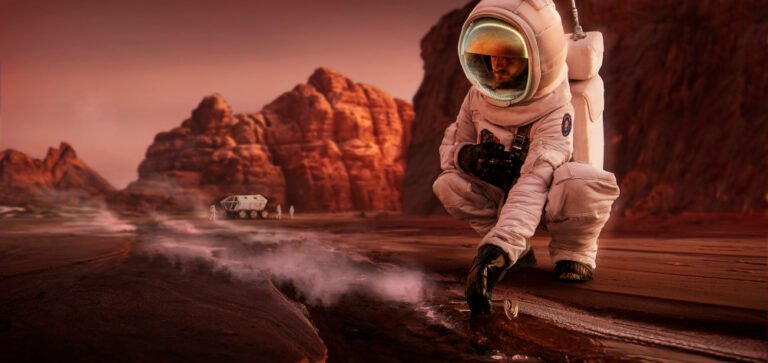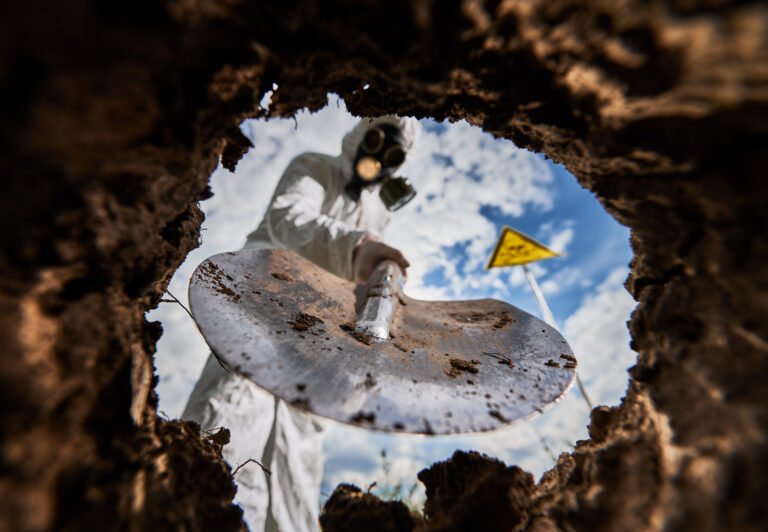8 Space Housing Projects Already in Development Right Now

If you thought space habitats were still the stuff of sci-fi sketches, think again. Right now—this minute—multiple teams (government agencies, startups, and international coalitions) are building real hardware and validated designs to house people off Earth: modules that will plug into the ISS, inflatable habitats that burst into livable volume, robotic 3D-printers that will build with lunar dirt, and even multinational plans for a permanent research base on the Moon. This article walks through 8 space-housing projects already in development, explains what each project actually does today, why it matters, the technical status, and what to watch next. If you’re writing, investing, teaching, or just curious, this is your snapshot of the space-housing landscape in motion.

Table of Contents
1) Axiom Station — commercial modules on a path to independence
What it is: Axiom Space is building commercial space station modules that will initially dock to the ISS and later separate to become an independent, privately operated orbital outpost — Axiom Station. The company is selling crewed missions, research payload slots, and eventually long-term habitation services. axiomspace.com
Why it matters: Axiom Station is arguably the clearest near-term example of space housing as a product. Rather than being purely government infrastructure, Axiom’s modules are designed to be rentable real estate: living quarters, labs, and commercial cabins that can host researchers, private astronauts, and tourists. The project bridges the ISS era and the emerging commercial LEO economy.
Where it stands now: Axiom has already flown private astronaut missions to the ISS and is accelerating its module assembly plan to enable an independent commercial free-flyer as early as 2028 (Axiom’s public timeline) by staging power/thermal and habitat modules in sequence. That progress is built on demonstrable flight experience and incremental module delivery. axiomspace.com
Key technical notes:
- Housing design emphasizes habitability (private cabins, hygiene, exercise, workspaces).
- Modules will be attached to the ISS first (gradual test & handover pattern) then separate as standalone habitats.
- Life-support scalability and long-duration habitability testing on ISS are crucial proving steps.
What to watch next: module launch schedule updates, ISS-to-Axiom undocking plans, and commercial agreements for hosted research and tourism.
2) Orbital Reef — a mixed-use commercial station (Blue Origin lead partner model)
What it is: Orbital Reef is a private, mixed-use space station concept jointly developed by Blue Origin, Sierra Space, Boeing, and other industry partners, pitched as a “space business park” for research, manufacturing, tourism, and government customers. It combines rigid modules with large inflatable habitat volumes and an operations architecture optimized for customers. sierraspace.com
Why it matters: Orbital Reef aims to create a commercially operated space housing product at LEO scale that supports varied revenue streams (from pharmaceutical R&D to hospitality). Its partners bring launch, habitat, and systems experience, which compresses some of the execution risk compared with single-actor projects.
Where it stands now: The project has moved beyond concept stage to hardware testing: Sierra Space’s LIFE inflatable habitat design—one of Orbital Reef’s components—has undergone high-pressure burst testing that exceeded safety margins in publicized tests, demonstrating materials and structural feasibility for large inflatable volumes. NASA and partners have also conducted human-in-the-loop testing using mockups to validate daily-ops procedures. The Verge
Key technical notes:
- Mix of inflatable (high internal volume per mass) and rigid modules.
- Integrated approach: cargo (Dream Chaser), habitats (LIFE), and service modules chained for an end-to-end offering.
- Testing has focused on fabric performance, burst pressure, and operational mockups.
What to watch next: partner procurement, orbital demonstrations, and timetable for module deliveries (orbital assembly campaigns).
3) Starlab — Voyager, Nanoracks, Airbus & international industry partners
What it is: Starlab is Voyager Space (with Nanoracks, Airbus, Mitsubishi, and others) building a next-generation commercial space station focused on research and continuity of microgravity access after ISS retirement. The design emphasizes modular labs and habitable volume tuned to scientific users and agencies. Starlab – A New-Era Space Destination
Why it matters: Starlab presents a different commercial model: an industry consortium targeting space agencies and corporate research groups who need predictable, agency-grade lab space, combined with commercial crew rotations. It’s effectively a science-first approach to space housing.
Where it stands now: Voyager/Nanoracks announce program milestones (system reviews, partner integrations) and continue to mature avionics, environmental control, and habitat interior designs. Starlab’s partners bring European and Asian industrial capacity, which helps with supply chain and regulatory alignment.
Key technical notes:
- Focus on sustainability of microgravity research infrastructure.
- Emphasis on robust life-support, long-duration habitability, and modular servicing.
- International industrial partnerships spread risk and broaden customer base.
What to watch next: completion of critical design reviews, agency commitments for hosted payloads, and any early docked demonstration missions.
4) NASA’s Gateway — the lunar orbital “hotel” and logistics hub
What it is: The Gateway is NASA’s international lunar orbital station that will support Artemis lunar surface missions and serve as a staging point for crewed lunar operations. It includes habitation, logistics, and docking modules enabling long-duration deep-space habitation in cislunar space. NASA
Why it matters: Gateway is the program that formalizes living beyond LEO on an operational timescale: it’s a habitat for astronauts in lunar orbit that must function as both a lab and a life-supporting home in a high-radiation environment with limited resupply cadence. Gateway’s architecture and interfaces will influence future lunar surface habitats and commercial lunar housing strategies.
Where it stands now: NASA and international partners (ESA, JAXA, CSA) have progressed module contracts (e.g., HALO/LP and other elements) and scheduled launches across the late 2020s. HALO (Habitation and Logistics Outpost) is a core element to provide life-support and docking for Orion and commercial landers. Gateway is actively into procurement and module fabrication phases. NASA
Key technical notes:
- Gateway habitats must handle deep-space radiation and long communication latencies.
- Interfaces are standardized for transits, docking, and crew transfer to lunar landers.
- Gateway will act as a testbed for habitation systems that later get translated to surface housing.
What to watch next: module shipment and launch manifests, life-support acceptance tests, and international contributions (e.g., ESA’s habitation elements).
5) ICON Project Olympus — 3D printing habitats and infrastructure on the Moon
What it is: ICON (known for terrestrial large-scale 3D printing) is developing Project Olympus—an in-space and lunar construction system intended to print landing pads, roads, unpressurized structures, and eventually pressurized habitats using local regolith feedstock and robotic tooling. iconbuild.com
Why it matters: One of the central cost drivers for space housing is the mass of shielding (for radiation and micrometeoroids). Using local material for structure and shield (regolith) directly reduces launch mass and cost. ICON’s approach brings proven terrestrial additive construction technology to the lunar environment, emphasizing automation and autonomy.
Where it stands now: ICON’s Olympus work has received NASA contract awards and public demonstration roadmaps; the company is iterating printers and binders for regolith simulants and designing modular systems that can be robotically deployed before crew arrival. iconbuild.com
Key technical notes:
- Printing with regolith requires heat, binders, or sintering approaches that are compatible with lunar dust abrasiveness and thermal cycling.
- Project Olympus focuses first on non-pressurized infrastructure (landing pads, roads) and extends to pressurized habitats when robotics, material testing, and power budgets scale.
- Robotic autonomy and robust dust-tolerant mechanisms are the primary engineering challenges.
What to watch next: in-situ demonstrations, binder/performance test results on regolith simulants, and scheduled lunar demo missions.
6) Bigelow / BEAM and the inflatable-habitat lineage (the expandables proven path)
What it is: Bigelow Aerospace pioneered expandable habitat technology and flew BEAM (Bigelow Expandable Activity Module) as a technology demonstrator on the ISS. BEAM proved that inflatable shells can survive space conditions while providing high interior volume per launch mass. NASA
Why it matters: Inflatable habitats (also called “expandables”) are a pragmatic way to get more living space for the same launch volume. BEAM validated key assumptions: fabric durability in orbit, micrometeoroid tolerance, and practical integration with station systems. Many newer commercial habitat designs (including Sierra Space’s LIFE and Orbital Reef’s inflatable components) build on BEAM’s heritage.
Where it stands now: BEAM is a flown demonstrator with multi-year data. That flight heritage has influenced later inflatable designs and confidence in scaling larger fabrics, windows, and composite layer approaches in next-generation modules. NASA
Key technical notes:
- Expandables reduce packaging volume but still need local shielding or burying for surface use.
- Repairability and puncture-management strategies (multiple layers, internal patching) are essential.
- Psychological benefits: larger, less claustrophobic volumes for crewmembers.
What to watch next: how new expandables scale to larger volumes with big window apertures, integrated viewports, and high-throughput life-support.
7) International Lunar Research Station (ILRS) — China + Russia + partners planning a lunar base
What it is: The International Lunar Research Station (ILRS) is an initiative principally led by CNSA (China) and Roscosmos (Russia) to build a multinational lunar research base (surface + orbital components) with participating countries pledged to collaborate on infrastructure, science, and logistics. The ILRS roadmap includes reconnaissance, construction, and utilization phases stretching into the 2030s. Wikipedia
Why it matters: ILRS is a major geopolitical and programmatic counterpoint to Artemis/Gateway plans. It represents a national-led route to sustained lunar habitation, with talk of nuclear surface power, in-situ resource utilization, and regional infrastructure that could support long-lived habitation and research. That makes it an important entry on any list of space-housing projects in development.
Where it stands now: ILRS planning documents and partner invitations show staged missions through the late 2020s and construction moves in the 2030s. Public reporting (including national presentations) indicates work on command centers, power plans, and sample-return/ISRU demonstrations as precursors to surface housing. Wikipedia
Key technical notes:
- National programs emphasize sovereignty and strategic industrial participation.
- ILRS plans include ambitious power infrastructures (including discussions of surface nuclear reactors) and cooperative research programs.
- Governance and international partner dynamics will influence timelines and the ability to host international residents.
What to watch next: China/Russia mission launch schedules, ISRU demonstrator returns, and partner agreements shaping final station architecture.
8) NASA 3D-Printed Habitat Challenge winners — MARSHA, Mars Ice House, and the transition to demonstrators
What it is: NASA’s 3D-Printed Habitat Challenge (2015-2019) seeded multiple winning designs (AI SpaceFactory’s MARSHA, SEArch+/Clouds AO’s Mars Ice House, and others) that advanced autonomous construction and habitat concept maturity. Those teams have continued R&D, prototypes, and advocacy — moving ideas from competition models toward practical demonstrators and integration with ISRU programs. NASA+2Spacefactory
Why it matters: Competitions like NASA’s habitat challenge accelerate practical architectural designs and production workflows (composite printing, ice shells, vertical structures) that will inform real habitat builds on Mars and the Moon. The winners proved that autonomous 3D construction can be materially credible and highlighted pathways to integrate biology, light, and psychology into structural design.
Where it stands now: Many winning teams maintain active programs, spin-off tech, or partnerships that feed into NASA and commercial ISRU contracts. For example, AI SpaceFactory continues to develop composite printing concepts (MARSHA), and the Mars Ice House concept has active feasibility analyses and exhibitions that keep the design in the developer pipeline. These designs are not just fantasy—they’re part of the protein of future demonstrators. Spacefactory
Key technical notes:
- The competition emphasized autonomy, material science (basalt composites, biopolymers, ice), and architecture that supports crew psychology.
- Several teams have transitioned into partnerships pursuing prototype fabrication and terrestrial demonstrations that de-risk space deployment.
What to watch next: partnerships between challenge teams and ISRU contractors (e.g., ICON), prototype fabrication timelines, and any in-space or polar analog tests.
Quick comparison table — what these projects solve
| Project | Primary housing type | Main advantage | Current development highlight |
|---|---|---|---|
| Axiom Station | Rigid commercial station modules | Commercial LEO living product; ISS → independent station | Module assembly acceleration; crewed missions to ISS. axiomspace.com |
| Orbital Reef | Mix of inflatables & rigid | Mixed-use commercial station (tourism + research) | LIFE habitat burst testing & mockup ops. The Verge |
| Starlab | Rigid modular research station | Agency-grade microgravity labs for customers | Systems SRR and partner integrations. Starlab – A New-Era Space Destination |
| Gateway | Cislunar habitat (HALO, PPE, etc.) | Lunar mission staging + deep-space habitation | Module contracts & international contributions. NASA |
| ICON Project Olympus | Robotic 3D printing on Moon | Build with regolith → lower launch mass | NASA work & Olympus system development. iconbuild.com |
| BEAM / Expandables | Inflatable testbeds | High interior volume per launch mass | BEAM on ISS demonstrated durability. NASA |
| ILRS (China+Russia) | International lunar base (surface + orbit) | Large national program for sustained habitation | Roadmap & national planning through 2035. Wikipedia |
| NASA Habitat Challenge winners | 3D-printed Mars habitats | Autonomous construction concepts | Prototypes, exhibitions, ongoing R&D (MARSHA, Ice House). Spacefactory |
What to watch next — technical milestones that will prove “real” housing progress
If you want a quick checklist that separates PR from real progress, watch for these technical milestones:
- Module launch & on-orbit assembly schedules actually met (Axiom, Starlab, Orbital Reef test flights). axiomspace.com
- Large inflatable structural tests passed (burst pressure, micrometeoroid resilience) — Sierra Space’s LIFE tests are an example. The Verge
- Regolith construction demonstrations — a successful Olympus-style landing pad or printed trench would be a concrete step. iconbuild.com
- Gateway module fabrication & launch milestones — delivery of HALO/other elements proves lunar habitability is operationally prioritized. NASA
- Fielded ISRU (oxygen/propellant) at useful scales — MOXIE-style pilots scaling to production reduces reliance on Earth. NASA
- International base commitments converted to funded hardware (ILRS moving from MOUs to launch manifests). Wikipedia
When several of these happen together in sequence, “space housing” shifts from demonstrator status to operational reality.
FAQs (6)
Q1 — Are these projects guaranteed to deliver livable habitats?
No. Each project faces engineering, funding, and regulatory risks. But many of them are already in hardware or test stages (BEAM flown, LIFE tested, Axiom flying crews, Gateway contracting)—that materially reduces the “science-fiction” part of the claim. NASA+2The Verge
Q2 — Which approach is likeliest for early lunar housing — inflatables or 3D printing?
A hybrid approach is most plausible: ship inflatable or rigid cores for immediate pressurized space, then cover/augment with locally printed regolith shells for radiation shielding. ICON’s Olympus and expandables like BEAM are both part of that playbook. NASA
Q3 — Will these habitats be private or government?
Both. Axiom, Orbital Reef, and Starlab are commercial ventures targeting paying customers; Gateway and ILRS are government-led infrastructure. The ecosystem will be mixed—commercial LEO habitats and national deep-space habitats working in parallel. axiomspace.com+2NASA
Q4 — How soon could people actually live in one of these habitats?
Short answer: The first (short-duration) occupants are likely to live in commercial LEO modules (Axiom, Starlab) within the next few years as ISS transitions toward retirement. Sustained lunar orbital living (Gateway) and surface bases depend heavily on 2028–2035 schedules for hardware and logistics. axiomspace.com
Q5 — What are the main engineering showstoppers?
Radiation shielding, autonomous long-duration life-support reliability, dust mitigation (lunar regolith is particularly abrasive), and robust robotic construction in abrasive environments are the top technical challenges. Each project addresses these differently. iconbuild.com
Q6 — How can I follow technical progress without being misled by hype?
Track concrete deliverables: module launches, flight tests, formal design reviews (CDR), public procurement awards, and independent test results (e.g., LIFE burst tests). Press releases are useful, but milestone slips are common—give more weight to hardware test outcomes and third-party verification. The Verge
Conclusion — from demos to dwellings: the next decade will be decisive
We’re not decades away from all space housing; we’re already in a transitional era where some types of off-Earth living (short stays, LEO commercial modules, and orbital habitats) are moving from concept to hardware. Projects like Axiom Station, Orbital Reef, Starlab, and Gateway anchor an ecosystem that mixes commercial demand with national exploration goals. Meanwhile, technologies that make sustained surface living affordable—robotic regolith construction (Project Olympus), ISRU, and autonomous 3D-printed habitats (MARSHA, Mars Ice House)—are progressing from competition and R&D into prototype phases.
If you want a one-sentence takeaway: expect first commercial living spaces and expanded LEO habitats within this decade, and treat lunar/surface housing as a staged program that depends on robotics, ISRU, and international coordination to make long-term habitation actually affordable and safe. Watch for tested hardware and printed regolith demonstrations—those two things signal the move from “housing demos” to actual “dwellings”.






